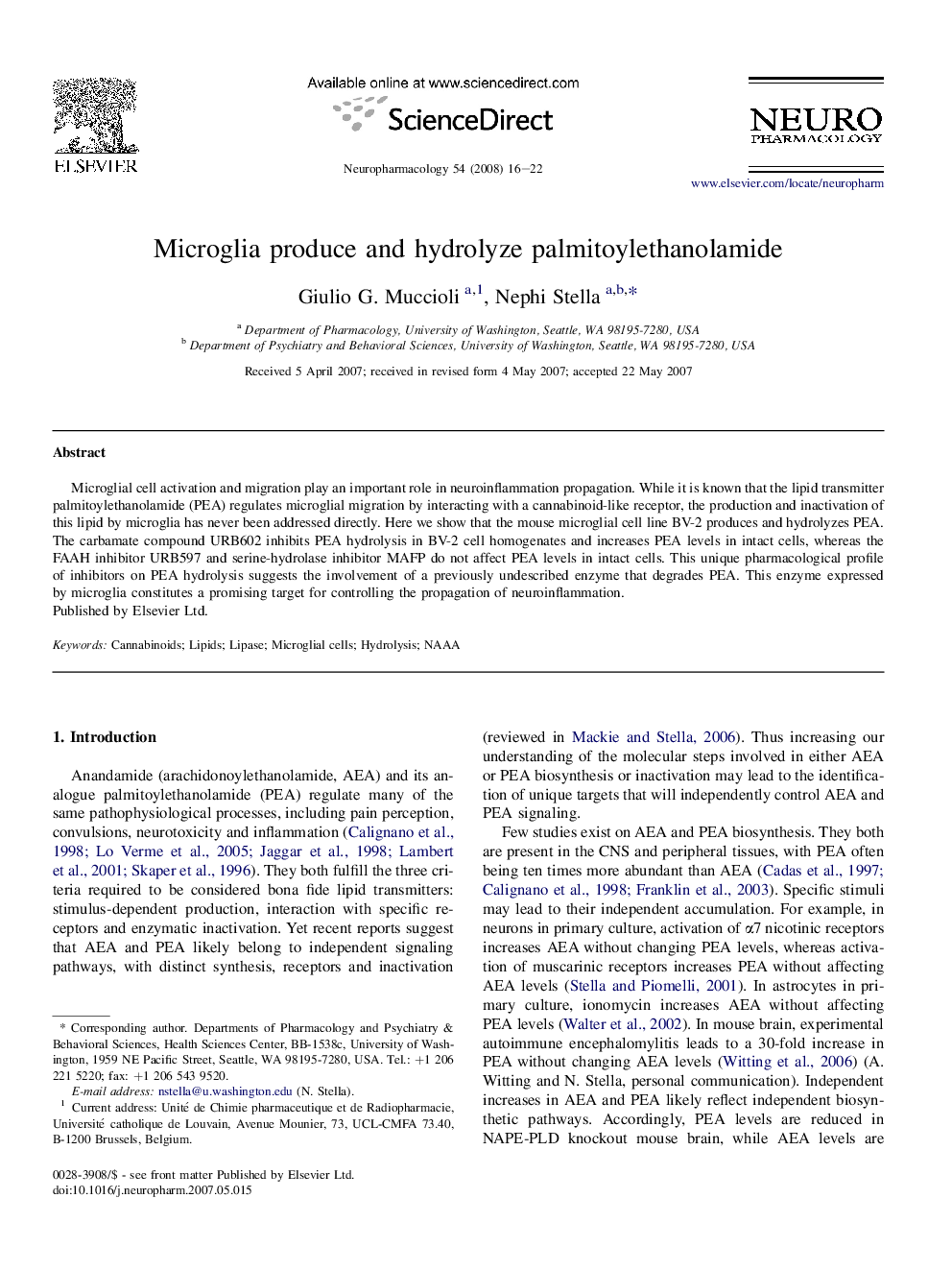| Article ID | Journal | Published Year | Pages | File Type |
|---|---|---|---|---|
| 5816232 | Neuropharmacology | 2008 | 7 Pages |
Abstract
Microglial cell activation and migration play an important role in neuroinflammation propagation. While it is known that the lipid transmitter palmitoylethanolamide (PEA) regulates microglial migration by interacting with a cannabinoid-like receptor, the production and inactivation of this lipid by microglia has never been addressed directly. Here we show that the mouse microglial cell line BV-2 produces and hydrolyzes PEA. The carbamate compound URB602 inhibits PEA hydrolysis in BV-2 cell homogenates and increases PEA levels in intact cells, whereas the FAAH inhibitor URB597 and serine-hydrolase inhibitor MAFP do not affect PEA levels in intact cells. This unique pharmacological profile of inhibitors on PEA hydrolysis suggests the involvement of a previously undescribed enzyme that degrades PEA. This enzyme expressed by microglia constitutes a promising target for controlling the propagation of neuroinflammation.
Related Topics
Life Sciences
Neuroscience
Behavioral Neuroscience
Authors
Giulio G. Muccioli, Nephi Stella,
